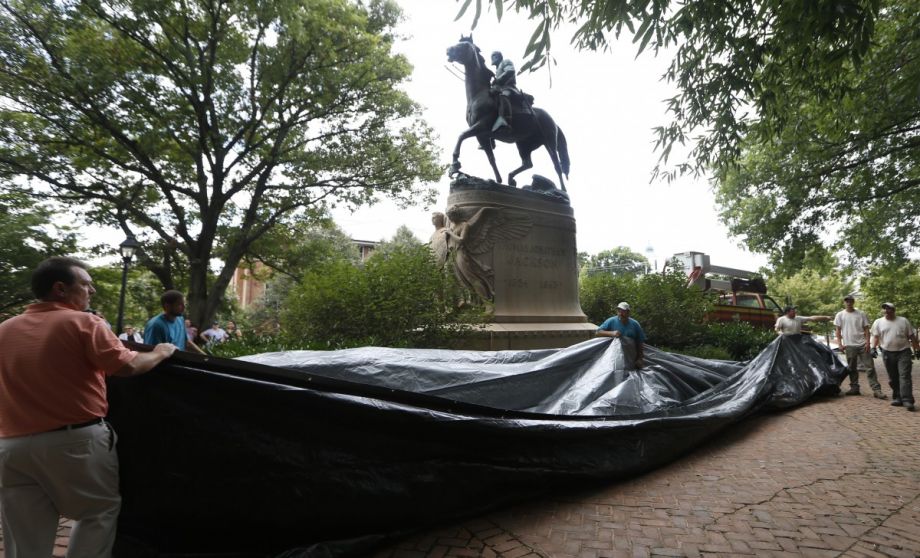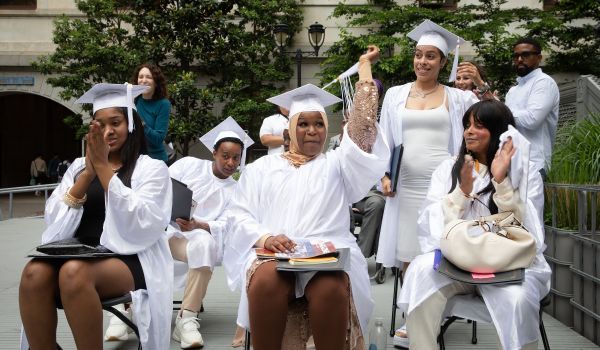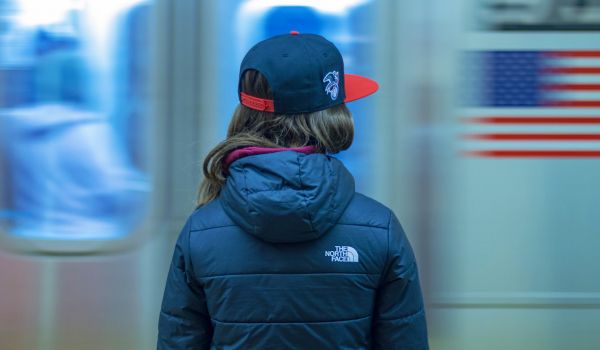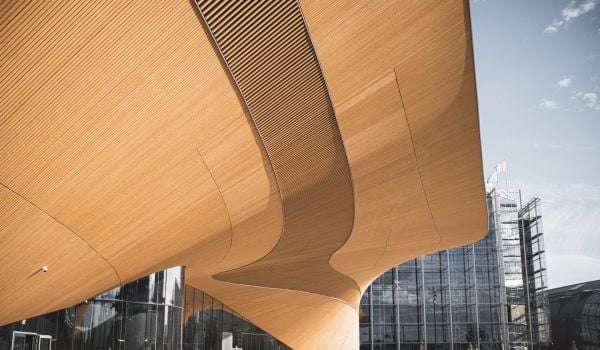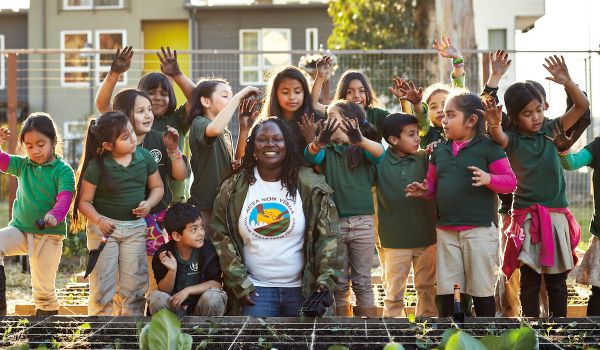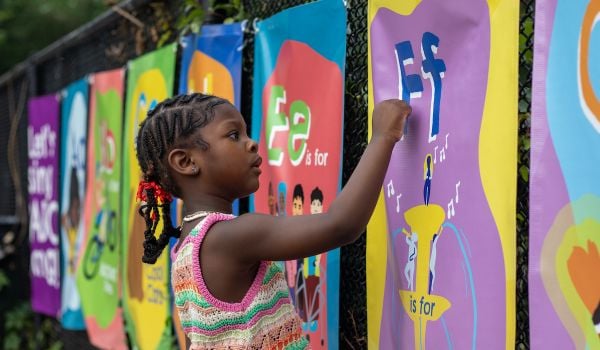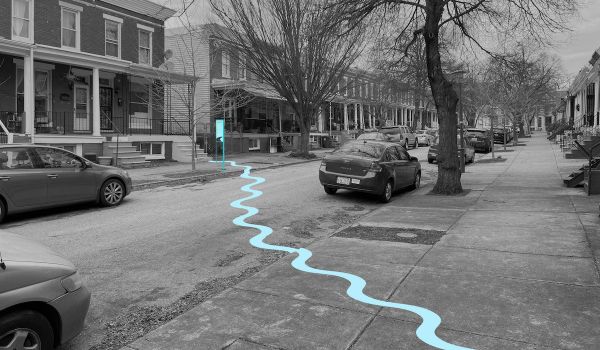June 10 is a day I’ll never forget. I had just walked away from chatting with a former architecture student I had the pleasure teaching at nearby University of Virginia. We met for a physical distancing chat, near the center of Charlottesville’s Downtown Mall. Seeing the infamous Robert E. Lee statue a few blocks away, the student and I talked about Gov. Ralph Northam’s order to remove a similar statue in Richmond in response to the national reckoning sparked by the murder of George Floyd.
I started to head east, looking up to the Paramount Theater, now holding the words “Black Lives Matter” on the marquee. Looking down, I realized that a white woman was approaching. She asked, “Can I say something to you?” from a safe distance. I paused before I responded, a little unsure of what to say, before I heard “Sure” come out above my mask.
She took off her mask and sunglasses to look me in the eyes. “I just wanted to say that I’m sorry about all that’s going on. I’m also sorry about my ancestors,” she said. “And one more thing: I love you.” As she caught her breath, all seemed so quiet all of a sudden. “Thank you very much. I appreciate it. That’s very kind of you.” I replied, turning to walk home.
I’ve never experienced anything like this, such a direct display of empathy. As I kept walking, I thought of the days after the events of August 2017 as I passed the site where Heather Heyer was murdered and more than 30 others were injured. Those days, some white people would look me directly in the eyes and say hello with intensity – but it felt like sympathy. What’s emerging at this moment is empathy – not as a perceived soft skill, but as a strong, connective, driving force for human interaction. Call it action-based empathy.
Jenna Wortham of The New York Times notes that, for three months, Americans have been living in a state of “hypervigilance and anxiety, coping with feelings of uncertainty, fear, and vulnerability — things many Black Americans experience regularly.” During this time, our empathy grew for essential workers, and the impacts on communities of color became front and center.
My interaction with a woman on a warm June day was the product of this confluence – moving beyond thoughts and prayers to action-based empathy to support the humanity of Black people. Such empathy has fueled demand to remove racist symbols from our public spaces. These symbols are familiar to us here in Virginia, where Confederate monuments loom over 220 public spaces. We’ve been watching intently as Confederate statues come down in Birmingham, Mobile, Louisville, and Alexandria – with Jefferson Davis toppled days ago by protesters in Richmond.
In Charlottesville, the current conversation about statues and monuments began in 2016 when student and community activist Zyhana Bryant petitioned the city council to remove the Lee statue and rename its park. Bryant’s petition charged the work of the City’s Blue Ribbon Commission on Race, Memorials, and Public Spaces, which led the city council to vote to remove both Robert E. Lee in Lee Park and Stonewall Jackson Statue in Court Square — resulting in the 2017 white supremacist Unite the Right rally and accompanying violence.
This movement’s action-based empathy led to Gov. Ralph Northam’s June 4th decision to remove the Lee statue in Richmond, and earlier, to sign legislation allowing localities to remove, relocate or contextualize Confederate statues and monuments within their communities starting July 1st.
As this date approaches, the time is now to think of how action-based empathy can create the inclusive and democratic designs we want to see in our public spaces. How do we take this new empathy I experienced from a fellow citizen into public spaces – keeping this moment alive? Action-based empathy must successfully integrate identity, culture, history, memory, and place. I propose three themes for action-based empathic design — using Charlottesville’s Court Square (home to the now-infamous Stonewall Jackson statue) as an example:
1. Increase connection to and empathy for the natural landscape.
To set the context of our human settlement, orient visitors to Court Square to appreciate our natural world. Designs need to create empathy for the flora, fauna and natural resources that have enabled our existence in this place – allowing for our human occupation. During the pandemic, our connection to the earth and the natural world dramatically increased. Walks and observations of the natural world became a cure for too much screen time and worries of the invisibility of the virus. Imagine if Court Square became a place that reminds us all of our position on this earth – soil below, nature around, the sky above - that we are all connected to for our survival.
2. Strengthen empathy through designs that include an inclusive account of human settlement, specific to this place.
Court Square needs to tell the full story of human settlement at this place for action-based empathy to grow. Start with the First Peoples who inhabited this region for 10,000 years, and the Monacan village of Monasukapanough on the Rivanna River. This forces a rethinking of the English colonists’ version of history, which begins in Jamestown in 1607. Recognize the narrative of Thomas Jefferson and the Monticello plantation in the distance, and the educational plantation of the University of Virginia – both made possible by the enslavement of African labor.
Create designs that combine theme one and two – with historical mapping that shows the vast number of plantations now hidden by single-family homes. Show how Charlottesville provided the Confederate war effort with swords, uniforms, and artificial limbs during the Civil War, and cared for the Confederacy’s sick and wounded in a 500-bed military hospital that employed hundreds of the town’s residents.
Then, ensure the African American narrative is entirely told here. Show how Emancipation in 1865 brought the development of African American communities — including one here called McKee Row, which was actively removed by the rigid anti-Black laws of the Jim Crow period (1877 – 1965). After the statue of Stonewall Jackson is removed, tell how Paul Goodloe McIntire funded it and placed it right where McKee Row once stood.
As visitors look upon the Court House, a design element could raise their awareness of Massive Resistance, adopted in 1956 by Virginia’s state government to block the desegregation of public schools mandated by the U.S. Supreme Court in 1954. This element would also note the location of the Jefferson School, built to serve the city’s Black students during this period. And the design could mark Vinegar Hill, a thriving Black neighborhood that suffered the fate of “urban renewal” in the 1960s, displacing the City’s Black population to the public housing we see today.
3. Continue the energy of the moment to create design competitions – visualizing action-based empathy.
Action-based empathy thrives in design competitions, such as General Devotion/General Demotion, which asked participants to reimagine the Confederate statue-strewn Monument Avenue in Richmond. Resulting designs were empathic models, with thoughtful programming that responded to a difficult and complicated historical context, proposing temporary and permanent interventions.
A design competition for Court Square should take points 1 and 2 as a starting place. Ideas produced under these guidelines would produce the inclusive design features we are looking for.
The time is now to keep the newfound understanding of empathy into our post-statue public spaces — where interactions such as mine become commonplace, the products of this moment of change.

Elgin Cleckley, Assoc. AIA, NOMA, is an assistant professor of architecture and design thinking at the University of Virginia, School of Architecture. Elgin teaches Design Thinking Studios and foundation courses at the School of Architecture, with appointment in the Curry School of Education and the School of Nursing. Elgin previously was the 3D group leader and design coordinator at the Ontario Science Centre in Toronto, producing architecture, art pieces and exhibitions for Canada and the world. Elgin holds a bachelor's in architecture from the University of Virginia, and a master's of architecture from Princeton University. Elgin has taught at the University of Michigan and the University of Illinois, Chicago, and worked in architecture firms in Toronto, Seattle, Chicago, and New York City.

